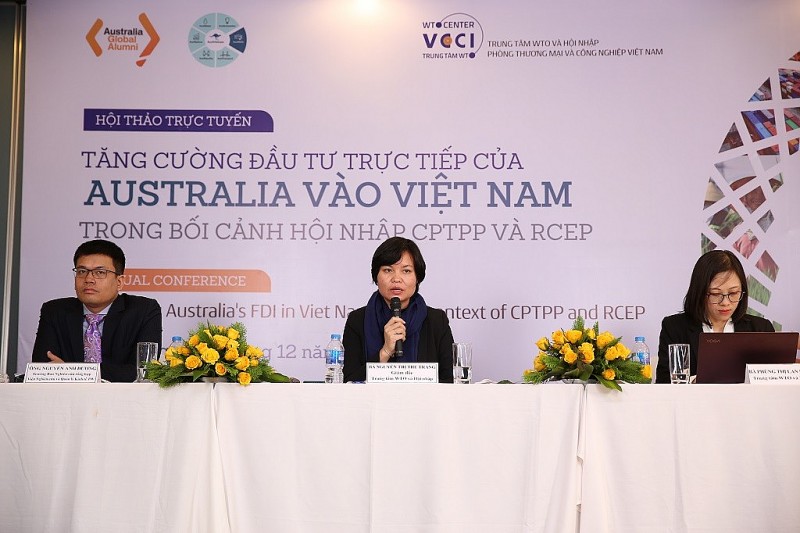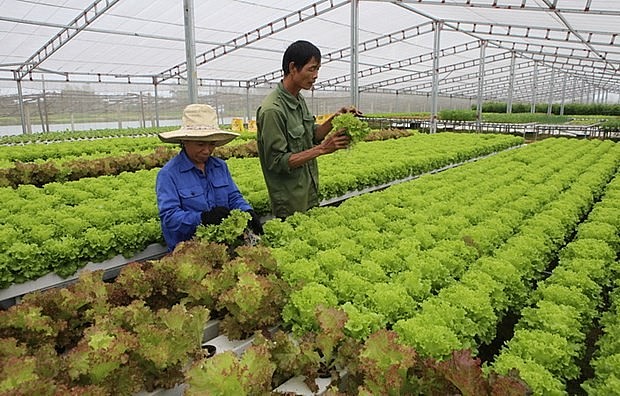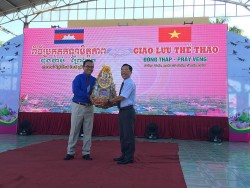
To make Viet Nam more attractive in the eyes of Australian investors
Latest
Concerns and apprehensions about how to "facilitate" FDI flows from Australia to Viet Nam were discussed enthusiastically at the webinar “Improving Australia’s FDI in Viet Nam in the context of CPTPP and RCEP” organized by the Vietnam Chamber of Commerce and Industry (VCCI) in collaboration with other agencies, related parties and the Australia and Vietnam Program on Human Resource Development (Aus4skills) on December 22.
 |
| Webinar "Improving Australia’s FDI in Viet Nam in the context of CPTPP and RCEP". (Source: VCCI) |
Still lingering at the potential level
According to the Center for WTO and Integration (VCCI), since the promulgation of the Law on Foreign Investment in 1987 and especially after joining the World Trade Organization (WTO) in 2007, FDI flows into Viet Nam has increased strongly, helping Viet Nam become one of the largest recipients of FDI in Southeast Asia (ASEAN).
In 2020, Viet Nam ranked 19th globally as a FDI host country, up five places compared with 2019 while Australia is the 15th largest investor in the world. However, the Australian direct investment capital in Viet Nam has been reported to be modest, and the linkage between Australia’s FDI and Vietnamese domestic partners is still limited.
Nevertheless, the direct investment from Australia into Viet Nam is forecasted to have many growth opportunities in the coming time, "especially after the two countries have officially announced the Australia-Viet Nam Enhanced Economic Engagement Strategy with the goal of bringing the two countries to become each other's top 10 trading partners and double bilateral investment in the coming time," said Mr. Charles Thursby-Pelham, First Secretary, Australian Embassy in Viet Nam.
Mrs. Nguyen Thi Thu Trang, Director of the Center for WTO and Integration, said that currently, between Viet Nam and Australia, there were three common Free Trade Agreements (FTAs), including two new generation FTAs, the Comprehensive and Progressive Agreement for Trans-Pacific Partnership (CPTPP) and Regional Comprehensive Economic Partnership (RCEP) with many significant commitments of Viet Nam for Australian investors.
"With the synergistic impact of these three FTAs and Viet Nam's 12 other FTAs, it will open up significant opportunities to attract Australian FDI enterprises to invest and do business in Viet Nam," emphasized Ms. Trang.
Citing a research report on Australian investment in Viet Nam in 2021 by VCCI, Ms. Phung Thi Lan Phuong, WTO and Integration Center, said that Australian FDI projects invested in Viet Nam mainly focus on the fields of processing, manufacturing (accounting for nearly 50%), services, and high-tech agriculture.
Although there are not so many Australian businesses operating in Viet Nam, Australian FDI projects have created a contribution into values of linkage, business blooming, and positive connection with Vietnamese domestic enterprises, for both input and output. Especially, the agricultural FDI projects have helped improve Viet Nam's agricultural technology level in areas where Australian FDI projects are in operation.
"In terms of investment scale, Australian FDI projects in Viet Nam are still small, with an average of USD 3.56 million /project. Viet Nam is being evaluated as one of the most attractive destinations for investment. Globally, new FDI flows from Australia to Viet Nam compared with other FDI flows into Viet Nam are still sluggish, only about 1/2. This raises the question, it seems that Viet Nam has not really attracted the attention of potential new investors from Australia", Ms. Lan Phuong put up a question.
Where are the hindering barriers?
According to the Research Report Australia’s Foreign Direct Investment into Viet Nam - Actual Efficiency Assessment and Policy Solutions conducted by the Australian Alumni Research Team with support from the Australian Alumni Fund under the Aus4Skills Program, the problems of the Vietnam’s investment environment that are hindering business activities of Australian FDI enterprises in Viet Nam include: troublesome administrative procedures, the tax system with many shortcomings, ineffective law enforcement, many negatives and unofficial costs, along with limitations in infrastructure, lack of high-quality labor...
Mr. Simon Pugh, Chairman of the Australian Chamber of Commerce in Viet Nam (AusCham) says that Australian investors have invested in many fields such as services, agriculture, finance, manufacturing, processing and manufacturing with the perception of taking advantage of Viet Nam's strengths in terms of abundant human resources, reasonable labor costs, geographical proximity to Australia, political stability, and that the Vietnamese market has great potential for development and expanded investment and business to other countries.
In Mr. Simon Pugh’s opinion, one of the most important reasons why Viet Nam is still not really attractive to Australian investors is the lack of information about the market, business investment environment in Viet Nam. "Potential investors in Australia are still lacking information about Viet Nam and this needs to be the immediate focus," Ms. Thu Trang pointed out.
Dr. Uwe Kaufmann - Senior Lecturer, Australian Institute of Business (AIB) cited 2 figures from the research results of Australian FDI for comparison, while about 48% of businesses said that the Vietnamese market was very potential and they would consider the investment in the near future, 47% of the respondents assessed that the Vietnamese market was potential but not attractive enough for investment.
Acknowledging that Australian investment in Viet Nam was still low and not commensurate with its potentials. Dr. Uwe Kaufmann also said that the main reason was the investors' lack of information about the market and the policy system, law, investment and business environment in Viet Nam.
To create a transparent and equal business environment
To remove obstacles and facilitate the FDI flows from Australia to Viet Nam, Dr. Uwe Kaufmann recommended that Viet Nam needs to comprehensively reform the public sector, regularly review domestic laws and regulations, fully enact the international commitments on investment, and create a fair and transparent business environment for foreign investors including Australian investors.
 |
| In the agricultural sector, numerous production models of Australian FDI enterprises become exemplars for domestic enterprises to learn. (Source: VNA) |
According to Mr. Nguyen Anh Duong, Head of General Research Department, Central Institute for Economic Management (CIEM), Viet Nam should learn from international experiences in policies to attract and promote foreign investment. For example, in the context of the global pandemic, Viet Nam can increase investment attraction in the fields of health and digital technology, accelerate digital transformation in investment promotion, and study an open approach that is suitable for foreign investors...
Besides solutions to attract Australian investment into Viet Nam, Ms. Phung Thi Lan Phuong also proposed initiatives to strengthen the connection between Australian FDI enterprises and Vietnamese partners. Many Australian investment projects in Viet Nam in recent years have created positive connections with Vietnamese partners. Especially in the agricultural sector, many production models of Australian FDI enterprises have become exemplars for Vietnamese enterprises to learn, at the same time also help improve the agricultural production level of farmers and local labor.
Therefore, the Government and localities of Viet Nam need to strengthen support activities to promote and increase the effectiveness of these connections.

| Thai Binh becomes more attractive to RoK firms A conference to promote investment from the Republic of Korea (RoK) in the northern province of Thai Binh was held online on December 13 by ... |

| Heightening the 'weight' of the brand name of Dong Thap in the eyes of investors From a “quite tranquil” place in Viet Nam’s economic map in the past, Dong Thap province has been remarkably improving its position, swiftly gearing up ... |
























